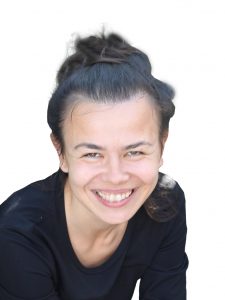Call for Special Track Papers
Call For Special Track Papers on
Art and Design in the AI Era:
New Creative Practices, Data Curation, and Automation
Notification deadline
- 15 August 2025
Camera-ready deadline
- 30 September 2025
Notification deadline
- 1st August 2024
Camera-ready deadline
- 20th August 2024
Scope and Objectives
In a time of rapid technological progress and increasing use of AI technologies for creative outputs, making space for theoretical reflection and historical positioning is equally important. The impact of generative AI models on creative practice is significant: while in the past, designing a single version of an artifact was a tedious task, today, generative AI systems allow artists and designers to create entire design spaces of solutions for a given concept much easier. In a sense, artifacts move from being ‘expensive’ or difficult to make, to being ‘cheap’ or easy to make.
When using the generative AI tools popular today, creatives now curate training data and make choices from large design spaces (meaning they re-curate results produced by the generative AI). In this way, the work of creative practitioners who use AI becomes more similar to curatorial practice. This is not a small change, and does not come without its challenges that include large amounts of time spent curating new datasets before the AI system can be used, or choice fatigue for curating the design space produced with the help of the AI system, ethical considerations concerning the intellectual property of data, and environmental considerations regarding the energy used by AI systems.
Special Track Topics
Topics of interest include, but are not limited to:
- Ways in which generative AI impacts definitions of creativity
What are the advantages and challenges for creative work, and what impact does this have for establishing what is a creative output (meaning, what is the impact of generative AI on defining creativity). - The changing nature of creative work
How should generative AI be used in teaching for future generations of creative practitioners? - Politics and legal systems around generative AI tools, intellectual property, and AI-generated content used in political communication
What has been the impact of feminist and postcolonial critiques on data curation, storage and usage? What is the current legal status of intellectual and creative property in various countries? And what has been the impact of artworks engaged in political content production using AI tools (such as for example the work of the Dor Brothers). What have been important initiatives by artists in connection with copyright in recent years and have they been successful? And what does this all mean for artistic production – both that which makes of AI, and that which does not? - Sustainability concerns and social challenges
We also invite contributions that discuss AI in the context of sustainability concerns together with contributions that present or analyze AI art works from the last years, especially on current social challenges such as digital social transformation, environmental pollution, climate change, politics, identity, body image and others. Which artworks stand out due to their critical approaches? What are their topics, technologies, and aesthetics? What are the conditions for production and which recipients are they aimed at? Which works of art have been particularly successful and why? - Artistic projects that make use of museum-owned datasets in AI-art
What are particularly exemplary cultural initiatives that support the production and presentation of AI art? What are the challenges?
How have or can museums encourage artists to engage creatively with their collection data? How can artists provide new impetus for curating collection data? - History of AI art and design, analysis of AI-generated artefacts that have shaped the field
In addition, we want to give space to present analyses of earlier AI artworks and to reflect on the differences or thematic parallels to today’s AI art and the development of the AI art genre. Moreover, what are the dominant narratives with regard to AI in the arts and design, how have they changed, and what aspects are missing in them?
Special Track Chairs
 Viola Rühse, University for Continuing Education Krems, Austria
Viola Rühse, University for Continuing Education Krems, Austria
Bio:
Viola Rühse works as a researcher at the Department for Arts and Cultural Studies at the University for Continuing Education Krems in Austria. Her current research focuses on photography, modern and contemporary art, and film. She is particularly interested in women’s history, critical theory, and digital humanities. She also works as a photographer and curator.
 Anca-Simona Horvath, Aalborg University, Denmark
Anca-Simona Horvath, Aalborg University, Denmark
Bio:
Anca Horvath is a guest researcher at the Research Laboratory for Art&Technology at Aalborg University and an assistant professor in the Hong Kong University of Science and Technology’s Computational Media and Arts thrust.
In her research, Anca investigates the relationship between emerging technologies, especially computational design, digital fabrication, AI and bio-technologies, and creative practice, as well as their place in broader cultural contexts. As a reflective pratitioner, she uses design-based research as a main method of inquiry. She has a background in architecture and worked as an urban planner, architect, and computational designer in Romania and Denmark. Anca has designed products, buildings and urban areas.
Special Track Technical Program Committee Members & Reviewers
- Viola Rühse, University for Continuing Education Krems, Austria
- Anca-Simona Horvath, Aalborg University, Denmark
- Brian Bemman, Durham University, UK
Georgios Palamas, Malmo University, Sweeden
- Alexander Pfeiffer, University for Continuing Education Krems, Austria
- Nicole Alber, Vienna, Austria
Publication
All registered papers will be submitted for publishing by Springer – LNICST series and made available through SpringerLink Digital Library: ArtsIT Conference Proceedings.
Proceedings will be submitted for inclusion in leading indexing services, such as Web of Science, Compendex, Scopus, DBLP, EU Digital Library, Google Scholar, IO-Port, MathSciNet, Inspec, and Zentralblatt MATH.
Available Journals
All accepted authors are eligible to submit an extended version in a fast track of:
- EAI Endorsed Transactions on Creative Technologies
- EAI Endorsed Transactions on AI and Robotics
- EAI Endorsed Transactions on Internet of Things (Scopus)
Authors have the opportunity to publish their articles in the EAI Endorsed Transactions journal selected by the conference (Scopus, Ei-indexed, ESCI-WoS, Compendex) by paying an additional $250, discounted from the standard $400 rate for conference authors.
The article’s publication is subject to the following requirements:
- It must be an extended version of the conference paper with a different title and abstract. In general, 30% of new content must be added.
- The article will be processed once the conference proceedings have been published.
- The article will be processed using the fast-track option.
- Once the conference proceedings are published, the corresponding author should contact us at [email protected] with the details of their article to begin processing.
Additional publication opportunities:
- EAI Transactions series (Open Access)
- EAI/Springer Innovations in Communications and Computing Book Series
(titles in this series are indexed in Ei Compendex, Web of Science & Scopus)
Paper Submission
Papers should be submitted through EAI ‘Confy+‘ system, and have to comply with the Springer format (see Author’s kit section).
– Regular papers should be up to 12-20 pages in length.
– Short papers should be 6-11 pages in length.
All conference papers undergo a thorough peer review process prior to the final decision and publication. This process is facilitated by experts in the Technical Program Committee during a dedicated conference period. Standard peer review is enhanced by EAI Community Review which allows EAI members to bid to review specific papers. All review assignments are ultimately decided by the responsible Technical Program Committee Members while the Technical Program Committee Chair is responsible for the final acceptance selection. You can learn more about Community Review here.
Submission Guidelines
Paper submission
Papers should be submitted through EAI ‘Confy+‘ system, and have to comply with the Springer format (see Author’s kit section below).
How do I submit a paper in Confy?
- Go to Confy+ website
- Login or sign up as new user
- Select your desired Track
- Click the ‘Submit Paper’ link within the track and follow the instructions
Alternatively, go to home page of Confy+ and click on “Open conferences”.
Submission guidelines
– Papers should be in English.
– Double-Blind Review. Papers have to be submitted anonymously.
– Previously published work may not be submitted, nor may the work be concurrently submitted to any other conference or journal.
Such papers will be rejected without review.
– The paper submissions must follow the Springer formatting guidelines (see Author’s kit section below).
– Authors are required to adhere to the Publication Ethics and Malpractice Statement.
Author’s kit – Instructions and Templates
Papers must be formatted using the Springer LNICST Authors’ Kit.
Instructions and templates are available from Springer’s LNICST homepage:
Please make sure that your paper adheres to the format as specified in the instructions and templates.
When uploading the camera-ready copy of your paper, please be sure to upload both:
- a PDF copy of your paper formatted according to the above templates, and
- an archive file (e.g. zip, tar.gz) containing the both a PDF copy of your paper and LaTeX or Word source material prepared according to the above guidelines.
*As per new EU accessibility requirements, going forward, all figures, illustrations, tables, and images ought to have descriptive text accompanying them. Please refer to the document below, which will assist you in crafting Alternative Text (Alt Text).
Download HERE.


